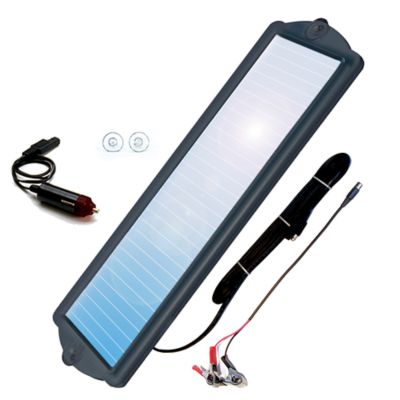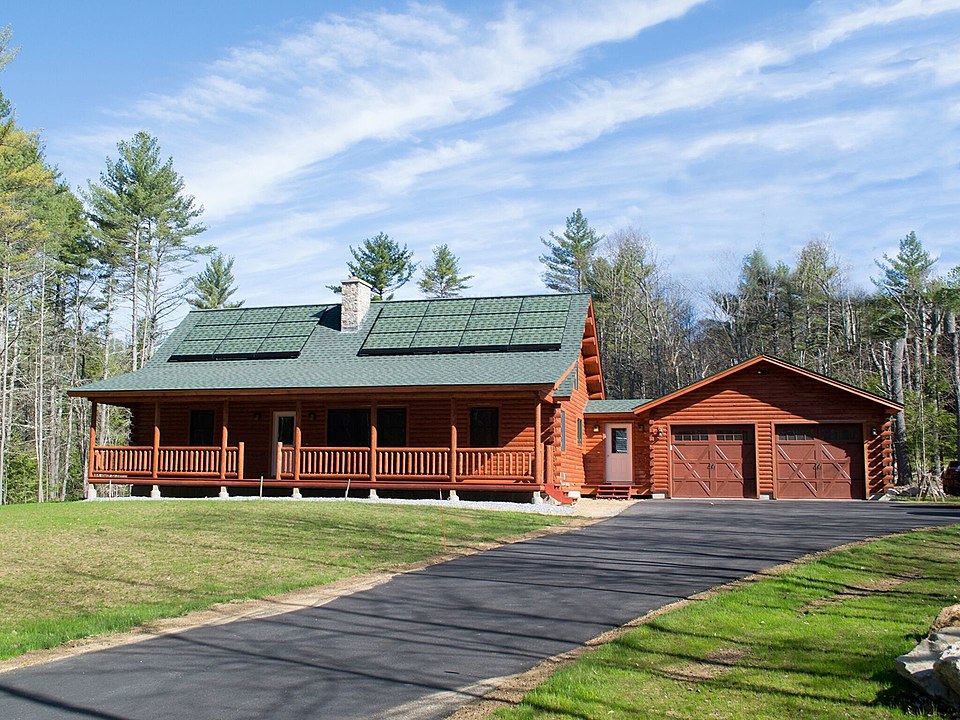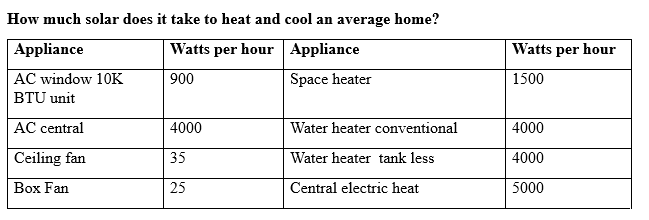What can I run on solar energy? I get this question a lot. Well, the question is not ‘what can you run on solar energy.’ The question should be how many solar panels do I need to run my entertainment system or microwave. You need to look at specific things to determine the amount of energy you need.
In theory, you can run anything on solar energy if you have enough panels. But do you want to spend $5,000 just to run one electric stove? Probably not.
Having solar energy does require you to make some decisions about what you want and need. You can perform and energy audit on your home so you can find out what things use the most energy.
This article will look at how much solar energy you need for different applications.
What Can You Run On Solar Power in Your Home?
The good news is that the price of solar panels is coming down and the efficiency is going up. That means you can run more things than ever off your solar panels.
Twenty-five years ago, when I first got into solar, the price was $12.00 per watt. Now it averages less than $1.00 per watt.
Solar panels can run all sorts of things to make your life comfortable and efficient. Like your dishwasher and hot water heater. It can also run your entertainment system and keep the lights on at night.
What Can I Run With a 100 Watt Panel?
Let’s look at an example. What can you run if you have a 100-watt photovoltaic panel? We won’t get into the nitty-gritty of sun hours and tilt (yet) but every location is going to be a bit different.
I know that my town of Falmouth, Kentucky averages 4.5 sun hours or insulation each day. In a perfect world, that means I would be getting 450 watt-hours per day. We should figure in a 20% loss so let’s say I am getting 360 watts for my day.
So, I am going to spend three hours this morning on my computer writing articles. I want to run my laptop which uses 40 watts per hour, my modem at 10 watts and a lamp at 16 watts per hour. That comes to 198 watts for the last three hours.
When I am done with my writing work I power down my computer and turn off the lamp. This is an important step because I don’t want to waste energy if I am not using something.
By now it’s lunchtime and I decided to warm up some soup in the microwave. Since it has been in the propane refrigerator I don’t worry right now about that energy. It takes three minutes to warm up using 38 watts of power.
I spend my afternoon doing farm chores and hauling compost to garden spaces for next spring. I am not using any watts right now. However, I do have music playing on my cell phone which is using battery power.
When I go back into my house I realize my battery on the cell phone is almost dead. I plug in my phone to charge which takes 12 watts for two hours of charging. I have been working outside and am pretty hot. I turn on a box fan for an hour to cool off and use 25 more watts.
Now that it’s evening, I decide to relax and watch an episode of Big Bang Theory on my laptop while I eat my dinner. It’s dark so I also turn on a light. As we know it takes 40 watts for the laptop and 16 for the light so my evening relaxation costs me another 56 watts. I go to bed having spent 329 watt-hours for the day.
This was a pretty simplified example but it gives you an idea of how to figure what you can “do” in one day.
This is a great kit to start off with
Solar Appliances
In my example above and the tables below, we are looking at appliances that were produced to run on conventional AC electricity. However, more and more appliances are made to run on DC or solar-generated power. Some are made to run right off the sun like a solar oven.
More and more appliances are being made to work with alternative energy systems. They may use passive solar, DC electric or simply being engineered to be super energy efficient. You will need to look into the various products to find out what you would need in terms of watts and panels.
We will explore these more in a future article but here is a sample of what is available. Click on the links to read more on these topics.
Water heater
Water pump
Solar heat
Solar fans
Basically almost all appliances and systems for homes are coming out in a solar compatible model.
List of Typical Watts Needed for Every Day Appliances
Here is a list of average watts needed to run household appliances. These are just averages to help you figure out the amount of solar that you will need.
You can use a kilowatt meter to measure the electricity used so you can have an exact figure.
A kilowatt meter is the perfect way to access how much energy your appliances use
Important Facts To Remember When Looking At Watt Charts
Everything is based on averages
Your solar system will vary with size, brand and how far current travels
Your age and efficiency of the appliance
Phantom loads
On and off cycles in some appliances such as refrigerators
How much solar power do typical kitchen appliances need?
Keep in mind that many of these items you would use for a fraction of the hour. For Example, your coffee maker takes 15 minutes to make coffee. You don’t need the whole using 1000 watts you need 250 watts.
How Much Solar Power Do Typical Lights Use?
How Much Solar Power Do Typical Living Room Appliances Use?
How Much solar Power Do I Need To Run My Tools?
Looking at these tables you can see why heating and cooling by using solar is not recommended. It would cost a great deal in equipment and make your Return on Investment (ROI) quite low.
Many conventional appliances have lower energy counter parts. Things such as wood heat, gas heat and appliances, and swamp coolers are popular with off grid applications. If you are doing a grid tied connection then you may not have to worry about what you can or cannot run. However, if you are doing net metering then you will want to get your refund by being as efficient as possible.
Read my article Off-Grid, On Grid and Hybrid Systems to learn more and compare.
Ame Vanorio is a former science and special education teacher, the director of Fox Run Environmental Education Center and a licensed wildlife rehabilitator. She teaches classes locally and online about organic gardening, green building, living off-grid and wildlife conservation. In addition, she is a freelance writer and writes for several gardening, tiny house and pet websites. She lives a sustainable life on her Kentucky farm with a myriad of domestic and wild animals.
Affiliate Information
As an Affiliate Associate with select sites, Fox Run Environmental Education Center, may earn fees from qualifying purchases. We only refer products that we have used and will use again. As a non-profit 100% of monies earned goes into our education and wildlife rehabilitation programs. There is no extra cost to you! Just enter the site via our recommendation and purchase whatever it is you want.
Tractor Supply is starting to carry more solar equipement

in stock [More]







